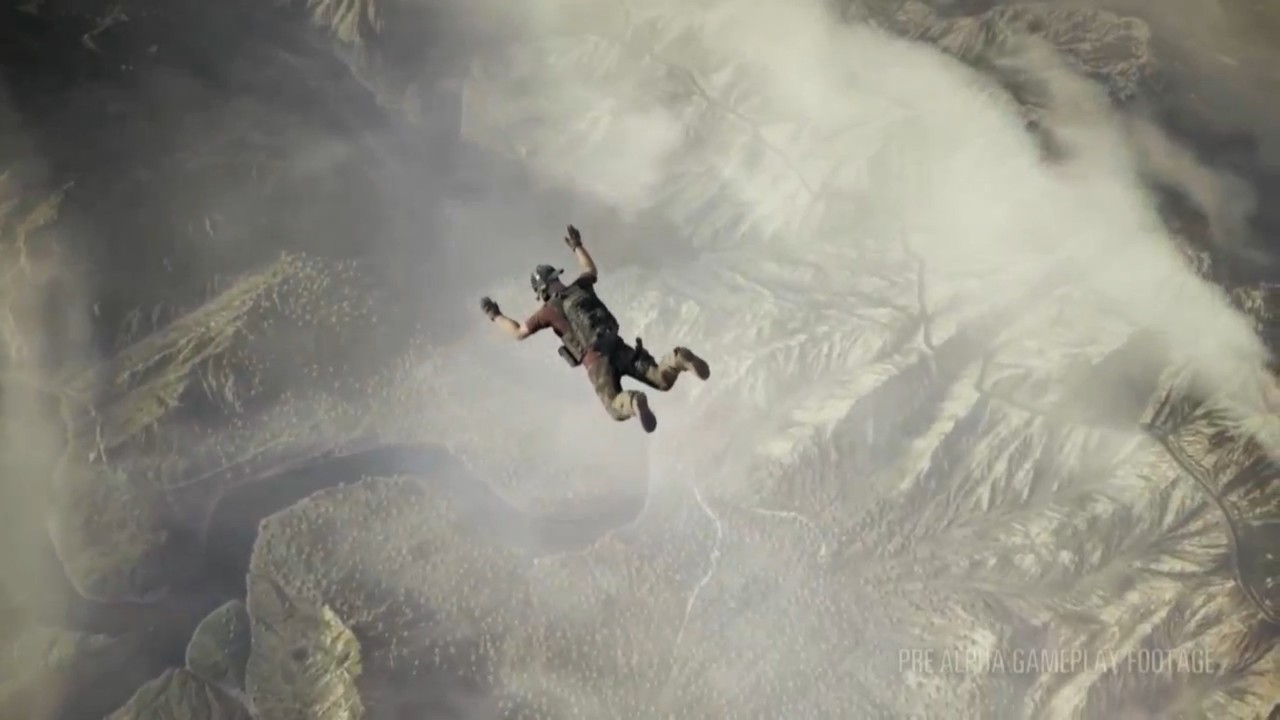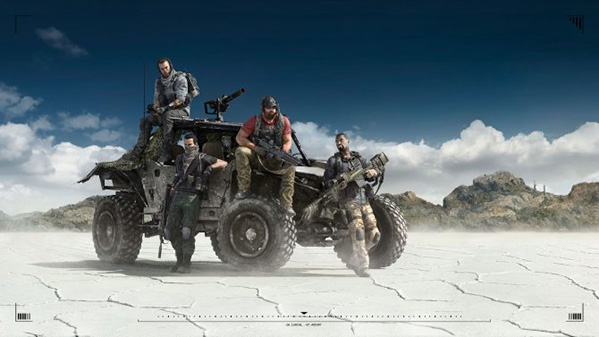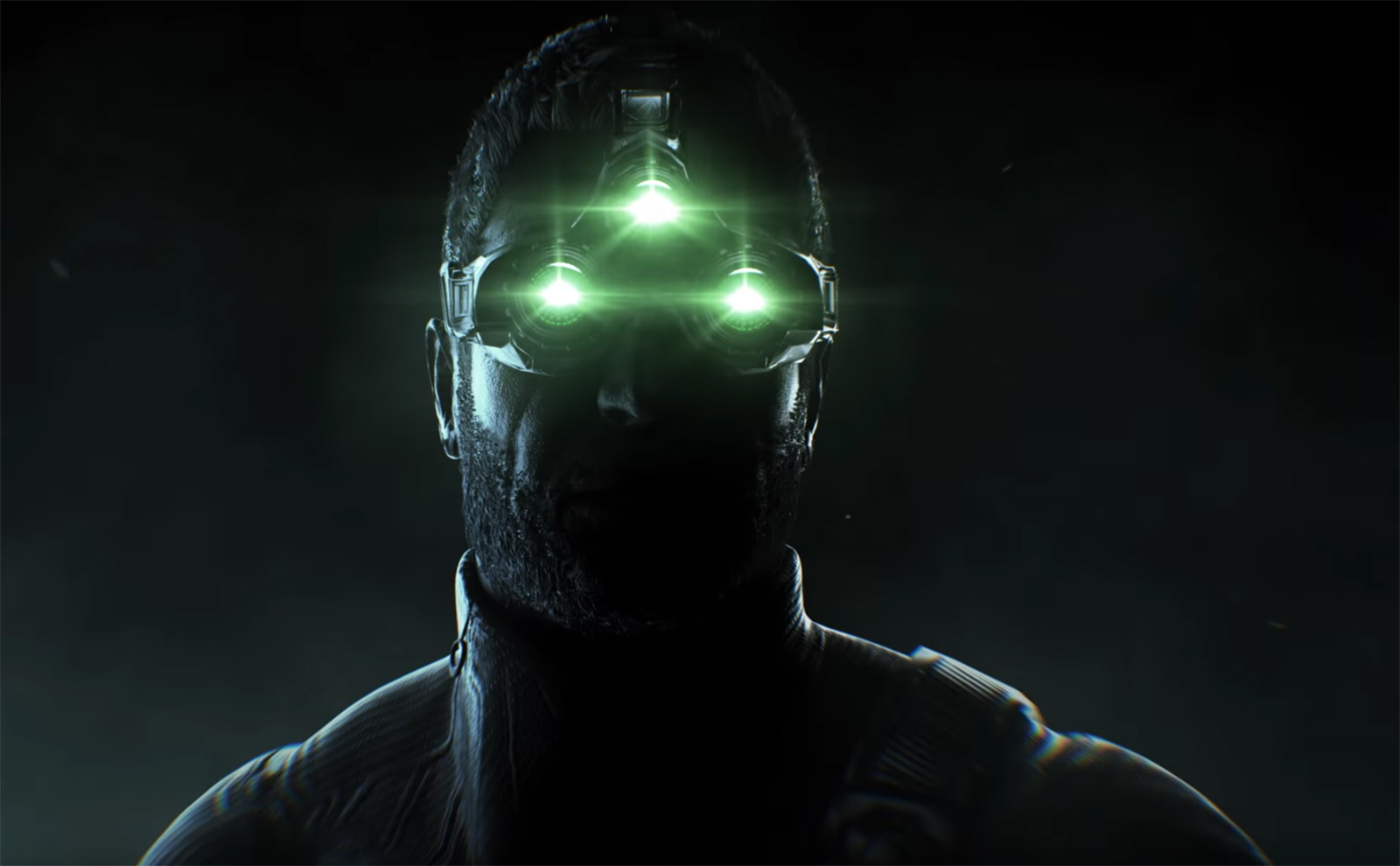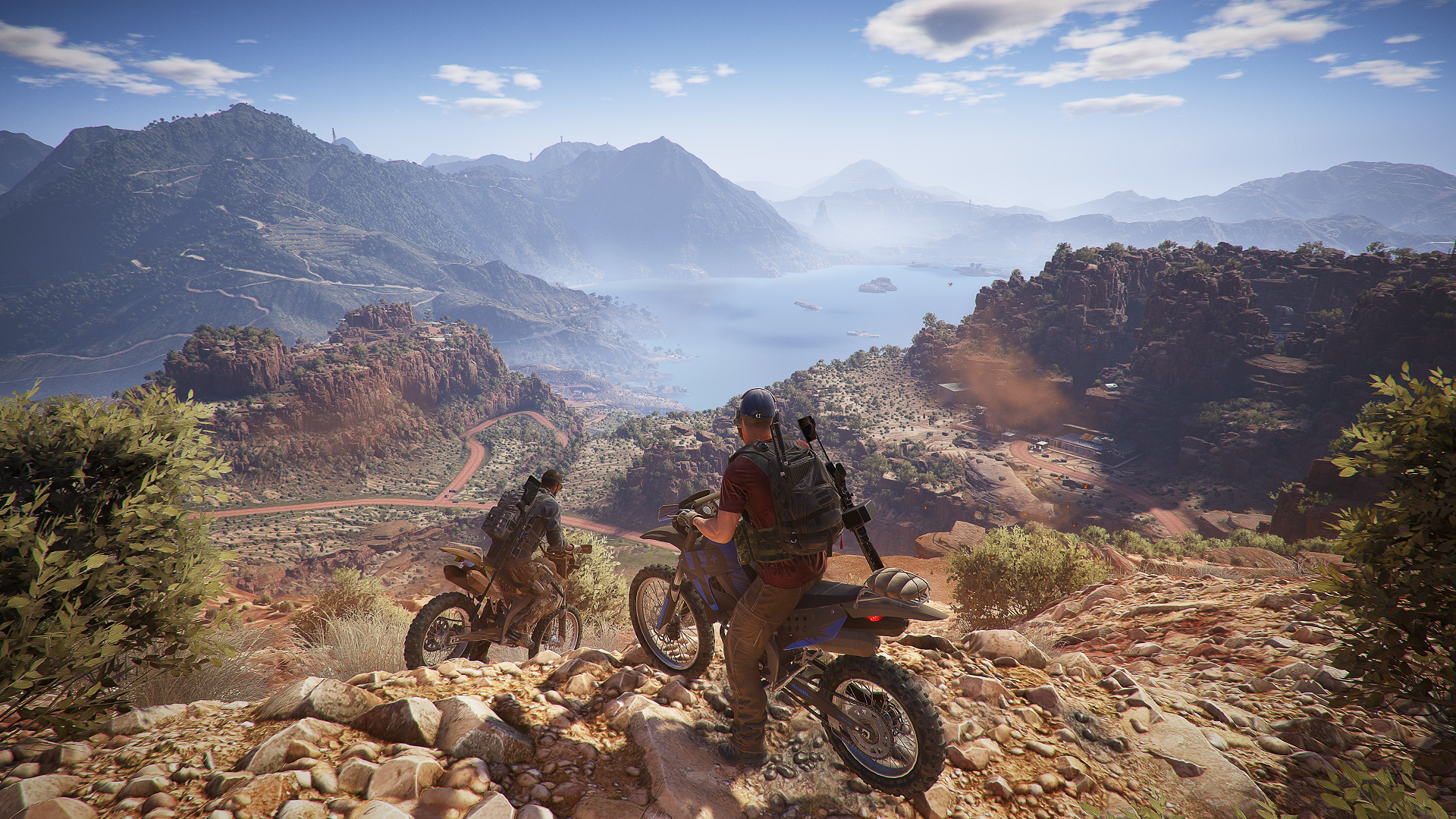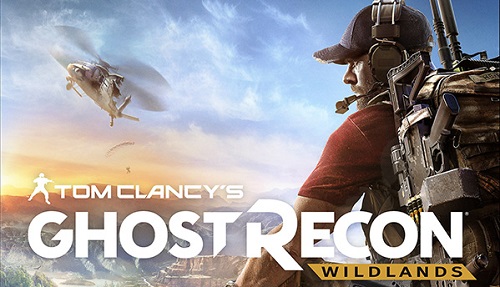
Ubisoft has finally made the move to the open-world for the Ghost Recon franchise, and it couldn’t have come soon enough. With most games enjoying a rich open-world environment these days, and having to compete with the likes of Horizon Zero Dawn, Legend of Zelda: Breath of the Wild, and Mass Effect Andromeda all launching in the same month, Ghost Recon Wildlands couldn’t have gone open-world at a better time. We witnessed the launch of Tom Clancy’s The Division, and although it had a few hiccups the game continues to evolve with an active community, so how does its super-stealthy brother compare in the massive environment of Bolivia?
In Ghost Recon Wildlands you are a Ghost, an elite US army special ops soldier. In a team of four, you’re tasked to reclaim Bolivia from an oppressive drug lord. It’s 2019 and the Santa Blanca Cartel has become too large a threat after they bomb the U.S. embassy in La Paz, Bolivia’s capital city. Pushing the Santa Blanca Cartel into the realm of terrorist groups, America initiates Operation Kingslayer. This operation becomes the main focus of your campaign in Ghost Recon Wildlands, and leads you down a wild path of death and destruction as you help the rebels and people of Bolivia reclaim their land.
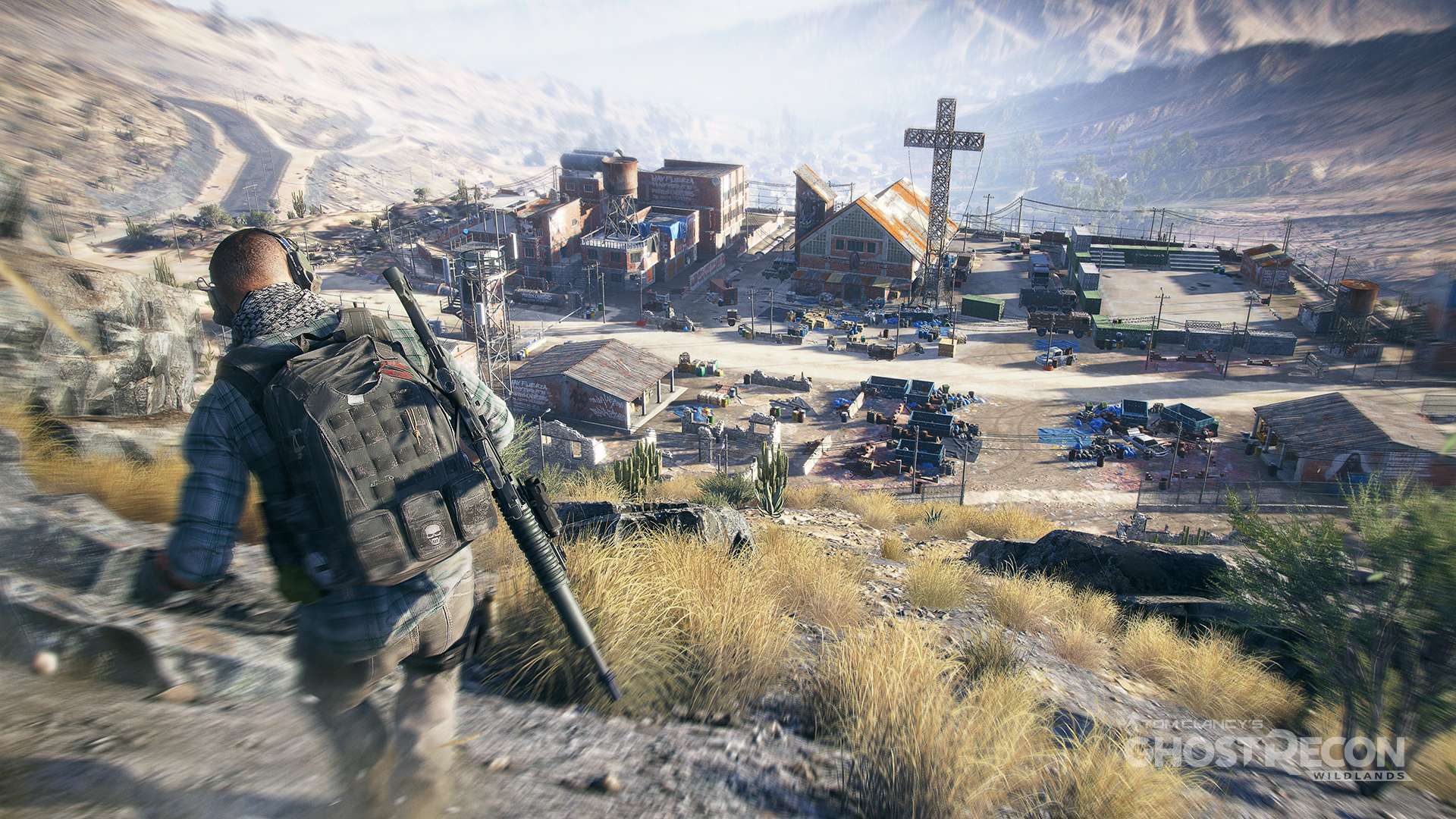
The basic concept of Ghost Recon Wildlands is to survey, mark, and kill without being detected. The Ghost Recon franchise has made its name by providing gamers with an alternative style of war shooter, one where you don’t run face first into a gunfight. It’s a little harder than your average shooter, and you do die easily if you leave yourself out in the open. Fortunately Ghost Recon Wildlands gives you all the tools to have a clear advantage over your enemy. So much so that you don’t even need to kill anyone if you don’t want to, leaving that up to your trusty AI which we’ll touch on later.
Ghost Recon Wildlands has been marketed as a game where you can do missions in whatever style you want. You can destroy a base without ever leaving your vehicle and/or make as much noise as you please, you can take out enemies one by one with stealth, or just get what you need and keep moving completely unseen. You’ll find in Ghost Recon Wildlands that you’ll probably want to mix up your methods of approach a bit as due to the game’s sheer size, clearing out bases becomes quite repetitious.
Ghost Reckon Wildlands has a leveling system which allows you to unlock useful upgrades to your movement, weapons, drone, teammates, and more. There are three components to unlocking the upgrades, you need to be a certain level, have skill points (which can be found around Bolivia), and also the right amount of supplies which you need to salvage as you go. Fortunately the supplies are aplenty and easy to locate on the mini-map as you go through bases and towns, and skill point locations can be placed on your mini-map by interrogating certain people in each zone.
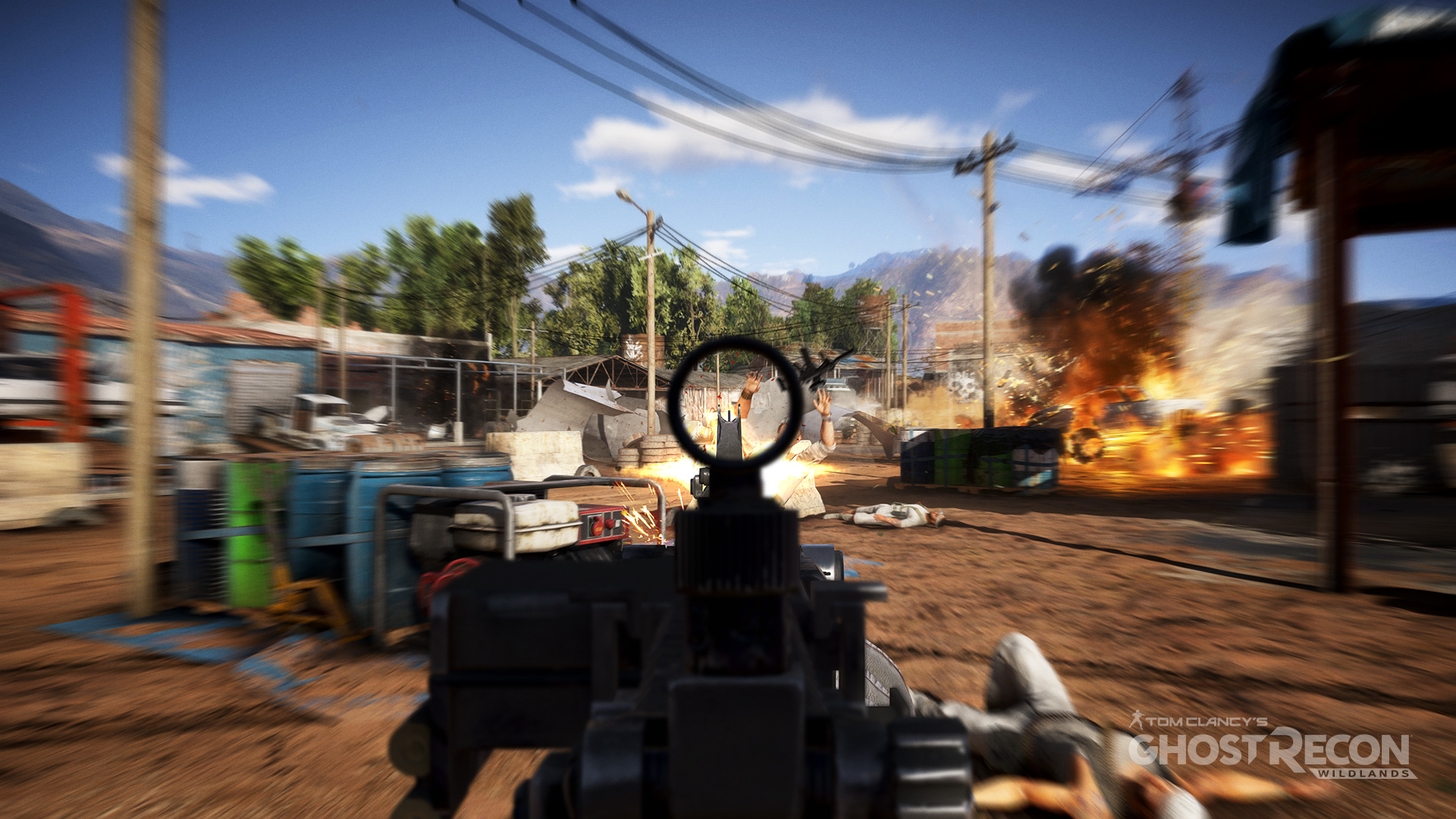
The AI of your special ops team is by far the most frustrating component of Ghost Recon Wildlands. They just don’t work well. Whether it’s watching them stand in plain sight undetected (because they’re Ghosts so they can’t be seen, right?) or targeting enemies and shooting them through walls or solid rock cliffs, the singleplayer experience in Ghost Recon Wildlands is one of utter disappointment. For a game with such a massive budget that looks beautiful and has so much to offer, it’s a shame that the core singleplayer component of relying on your team isn’t up to scratch.
The other near game-breaking problem with Ghost Recon Wildlands is that the enemies often take far too long to spawn. Obviously with such a big map you wouldn’t want the spawn distance to be too drastic otherwise it would substantially diminish the frame rate, but being able to land your helicopter, pick up some intelligence, and then get back in to the helicopter and begin taking off before the dozen enemies spawn around you is a bit absurd.
Also, often the items haven’t spawned yet, or don’t spawn at all. There was one instance where we waited for a skill point to spawn, had enemies spawn all around, cleared them out, and the skill point still did not spawn. This is not only a frustrating part of Ghost Recon Wildlands, but it was also not uncommon. We thought maybe it would be fixed in an update at launch so tested it after launch only to find that the enemies spawned late in the very first two bases we explored. If however you choose not to fly a helicopter directly into the middle of a base, you may not encounter this near game-breaking problem at all, and given Ghost Recon Wildlands is supposed to be a game of stealth, we’ll hope and pray Ubisoft can smooth over these very rough edges in upcoming patches.
Where Ghost Recon Wildlands is at its best is when you’re in a solid group of four friends (or just good online players), all working together using microphones and most importantly patience. As mentioned, the AI of your special operations team is what kills the singleplayer enjoyment, so removing that aspect makes it one of the best tactical shooters on the market today. It’s pretty straight forward to join an online group, and the game actively encourages you to do so if you try to remain offline to the point of asking you if you want to join an online lobby every time you fast travel. We did have some lag issues when playing with players from around the world, but if you keep it within your region you shouldn’t have too many dramas.
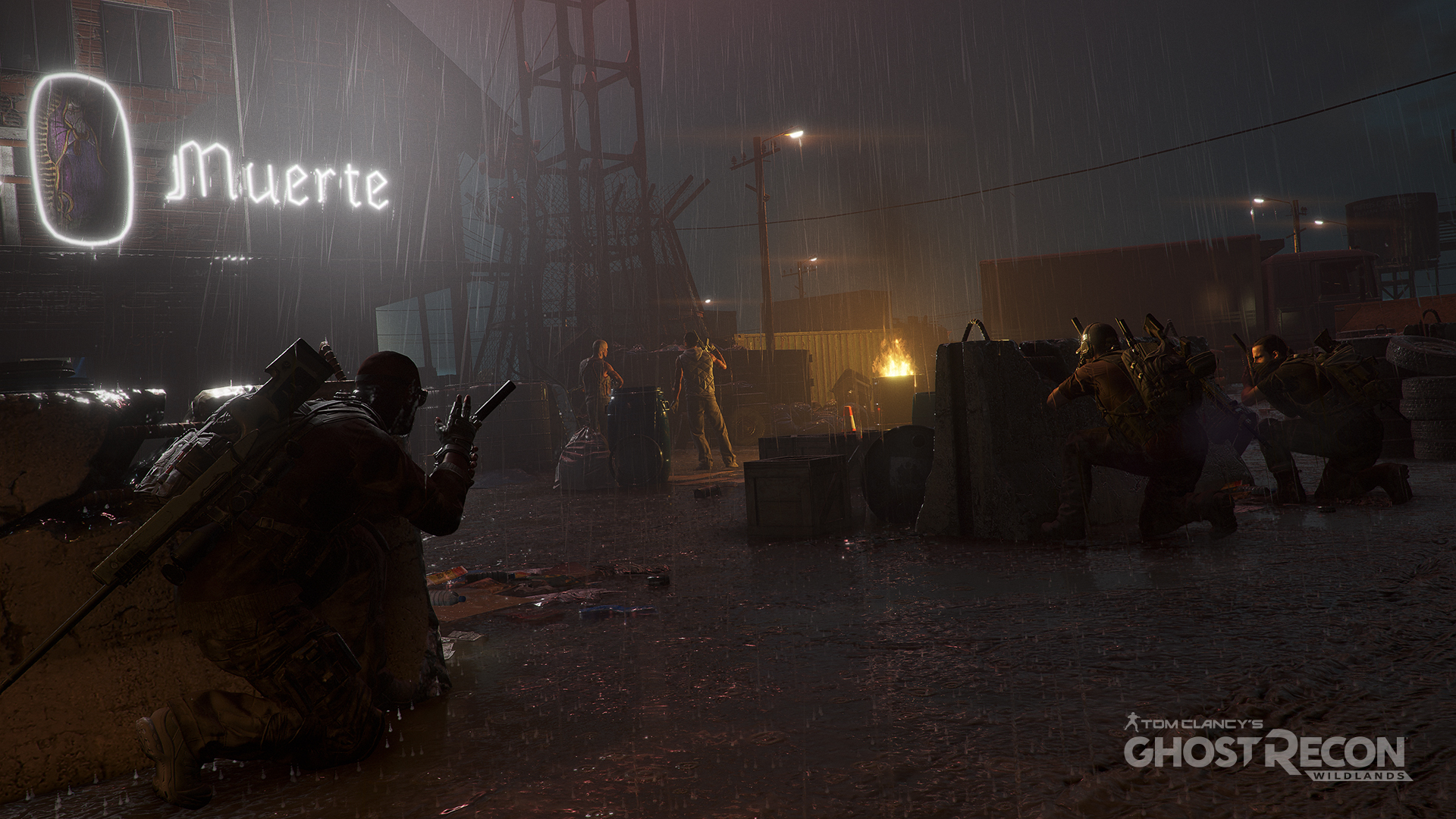
With a day/night system and dynamic weather, the way you experience missions will almost certainly be different to your friends if you’re not playing together. Sometimes it’s easier to approach in the darkness, but unlike Tom Clancy’s Splinter Cell you’re not given any indication of how visible you are, so proceeding with caution becomes a necessity. During the day, we found it to be easier to find places to hide and stalk up on enemies as you are fully aware of your surroundings, and little hiding spots scattered around the pretty scenery are much easier to spot.
Bolivia has never looked more beautiful than it does in Ghost Recon Wildlands. Accurately representing the many different locales throughout Bolivia, particularly its unique environments and ecosystems, if you ignore the constant harassment of side-objectives on the mini-map and just take in the atmosphere for a moment, Ghost Recon Wildlands becomes a peaceful utopia. At almost three times the size of Grand Theft Auto V, almost 200 sq. kilometres to explore, the Ghost Recon Wildlands map is just a bit smaller than Just Cause 3, but has more land.
A lot of the buildings you come across in Ghost Recon Wildlands can be fully explored, and are highly detailed on the inside. Some of the architecture throughout Ghost Recon Wildlands is particularly stunning. Massive temples on hilltops, luxurious mansions, and sophisticated compounds make the game feel all that more immersive and realistic. A lot of the objects throughout the world act quite strangely when you bump in to them however, such as chairs or wheelbarrows, which takes away from the realism and leaves us wondering why they’re not just stuck to the floor.
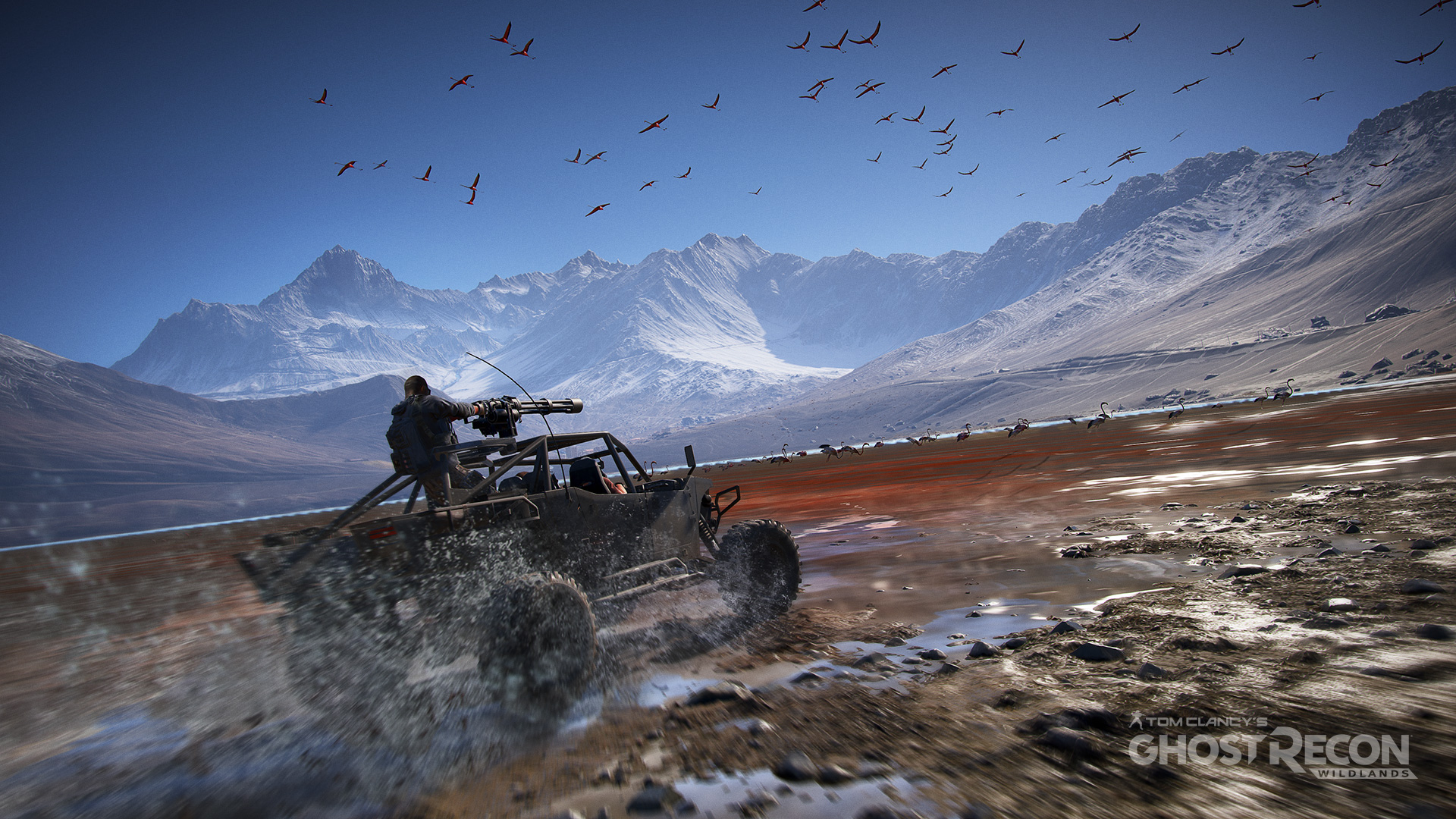
Ghost Recon Wildlands‘ guns are what puts it in a league of its own. Where other current games have gone either too far in to the future or to a point in history where guns are fairly straight forward, the fact that Ghost Recon Wildlands has guns you’d find in a real war in 2017 allows players to enjoy the different looks and feels of the fully customisable weapons, not to mention using them in combat. With plenty of skins and attachments to unlock throughout the game, we ended up spending a lot of time in the load-out screen fiddling with weapon customisations. Vehicle handling has come a long way since even the open beta, and players will now find land vehicles to be far more responsive and accurate on roads. Helicopter controls can be a little shaky at first, but actually work quite well once mastered. Hopefully with one of the season pass expansions, namely Narco Road, will feature some helicopter gunfights as you literally race to destroy the new cartel.
There are already so many suggestions within the Ghost Recon Wildlands community for ways the developers can improve the game. With a bit of luck we’ll see the same kind of changes The Division received, and the community and game can blossom into what it should be. Ghost Recon Wildlands is not a bad game, but it’s far from perfect. With the two major gameplay flaws we mentioned, it’s unjustifiable to score it any higher than what we have. Hopefully fixes come sooner rather than later so that we can thoroughly enjoy the season pass content.
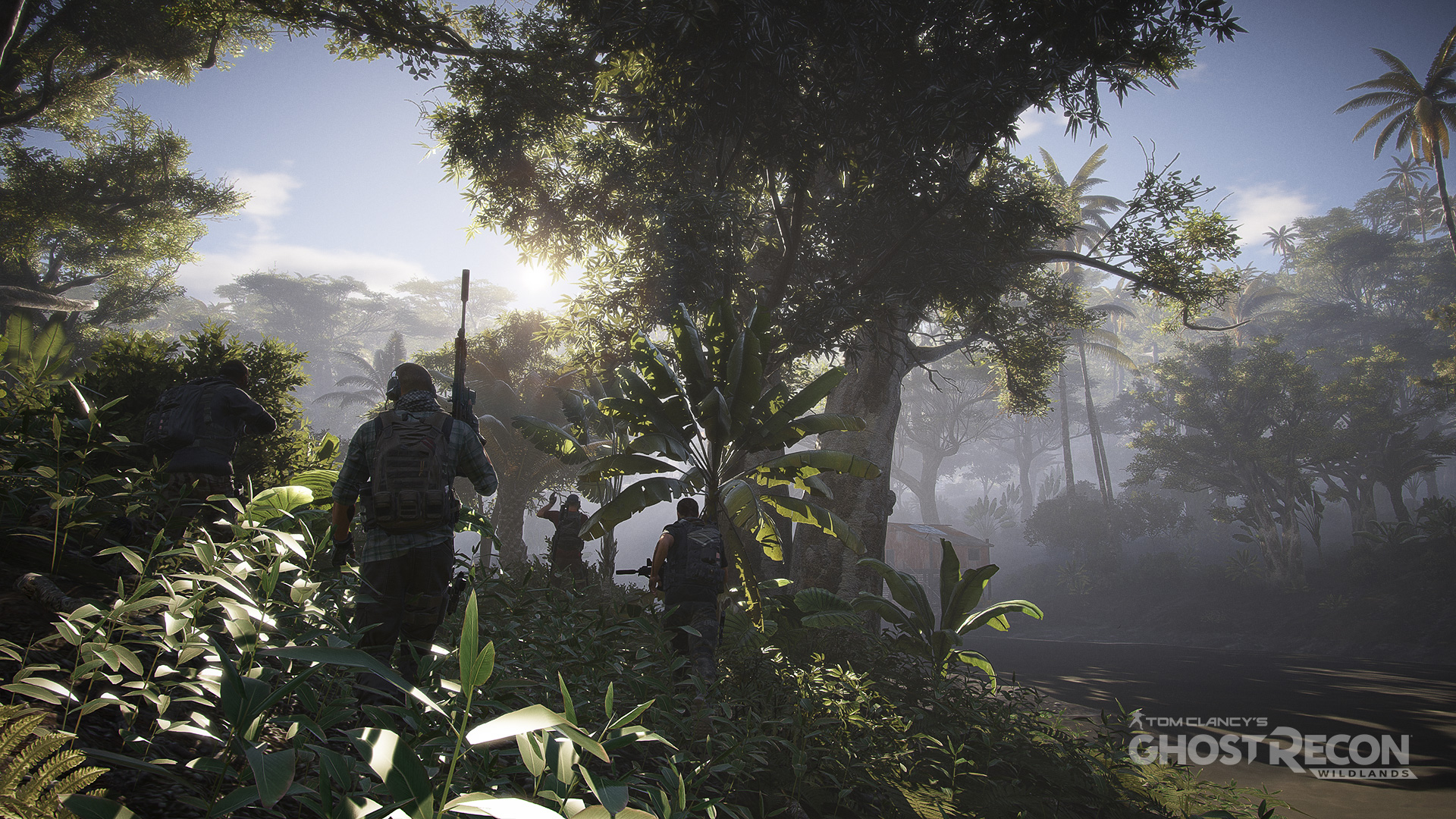
Ghost Recon Wildlands was reviewed on a EVGA GeForce GTX 1080 FTW Gaming ACX 3.0 and had momentary freezing issues with all settings on ultra, but ran at 100% once lowered slightly.
- Immersive environments
- Realistic modern warfare
- Definitely your money's worth for longevity
- Near game-breaking laggy spawning of enemies and collectibles
- Very disappointing AI, particularly your own teammates
- Rinse and repeat intel gathering gets dull

